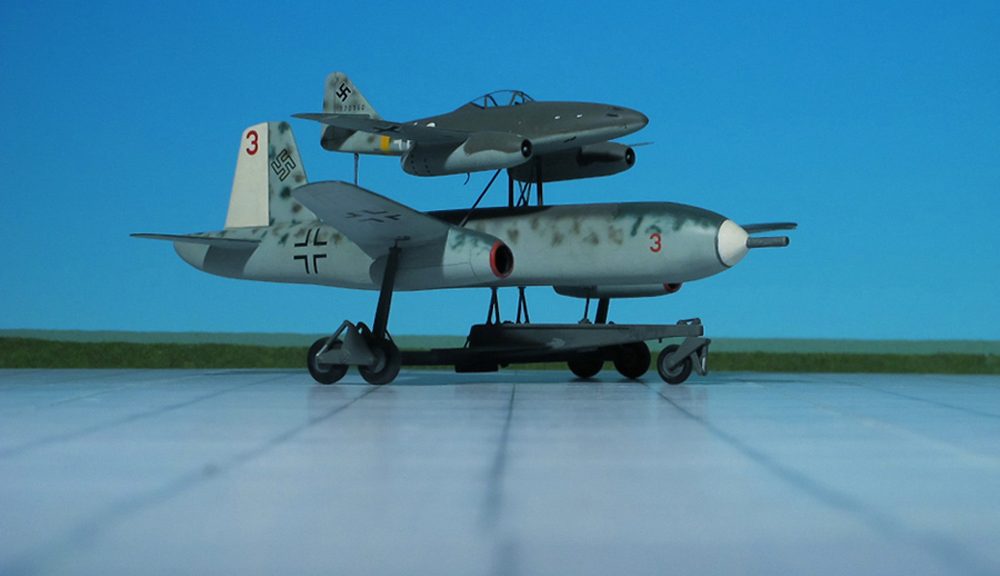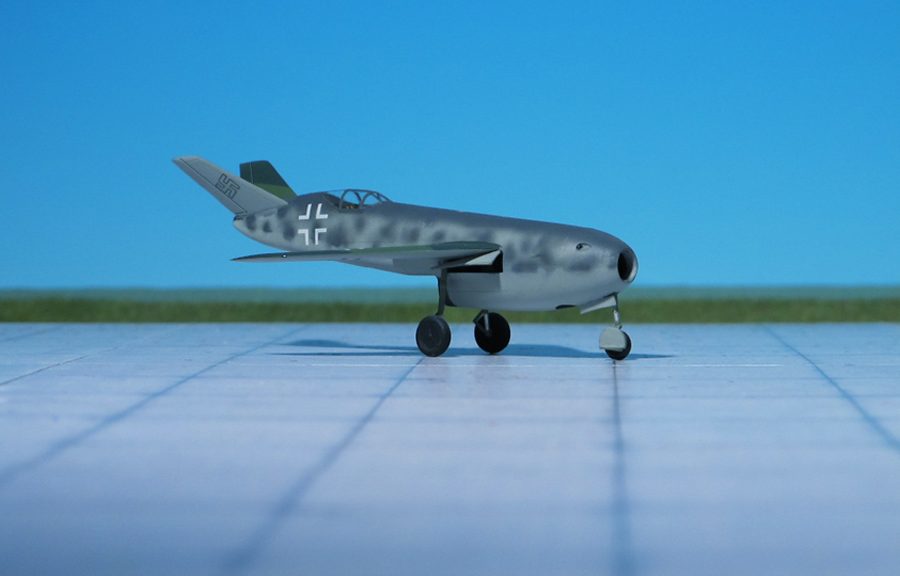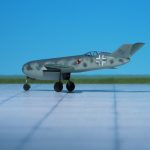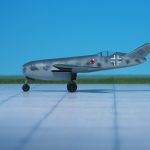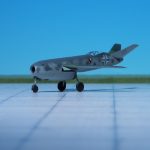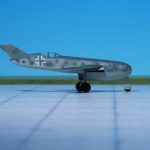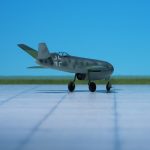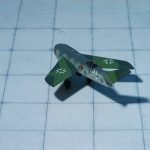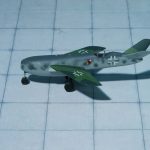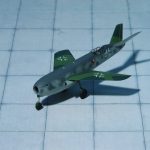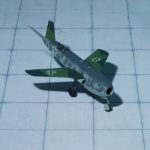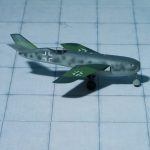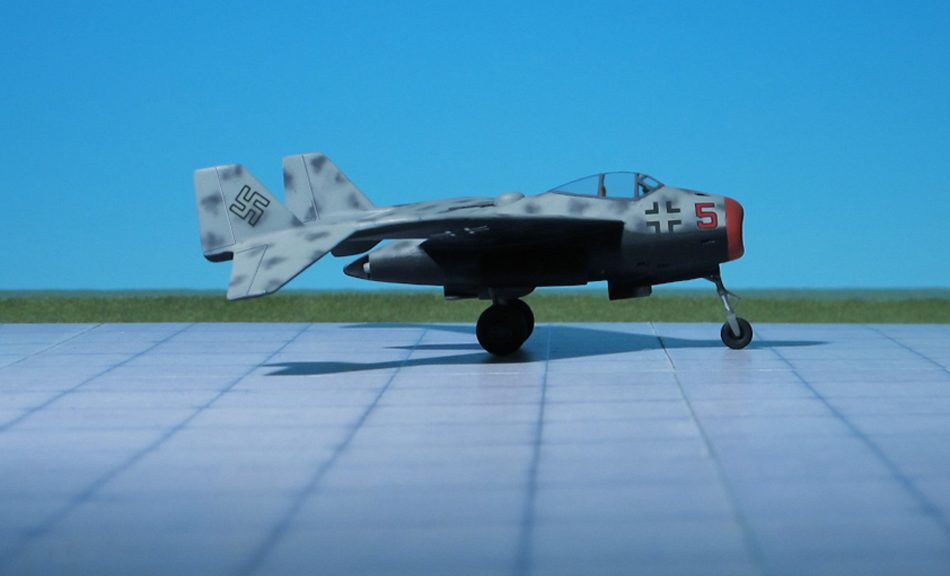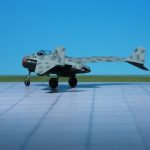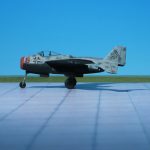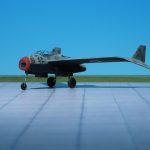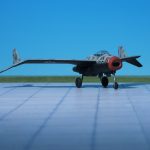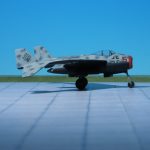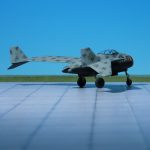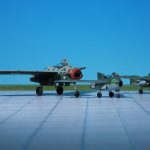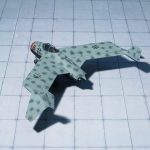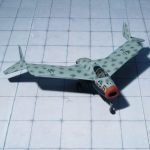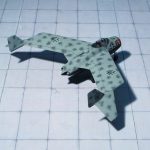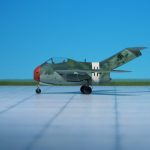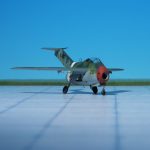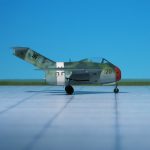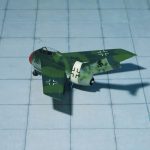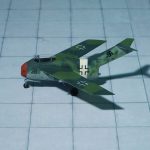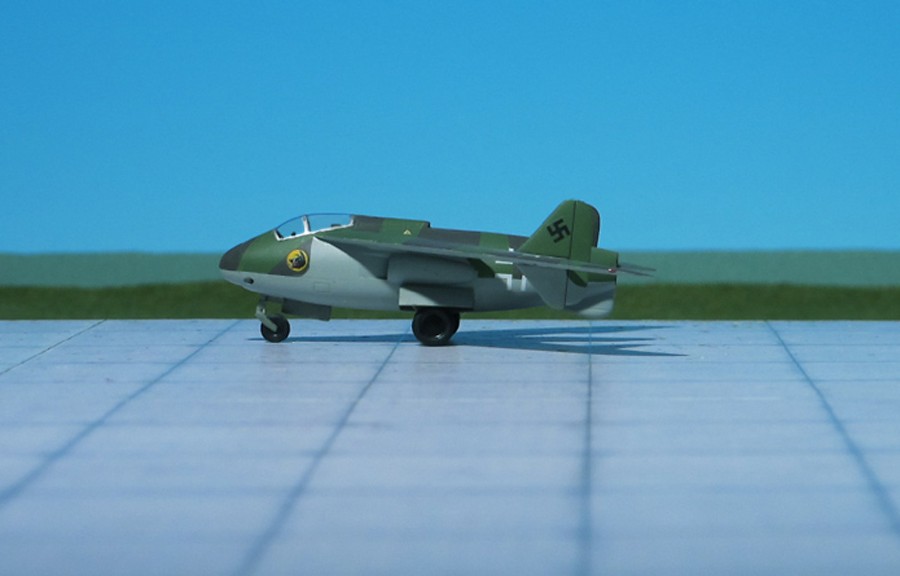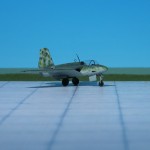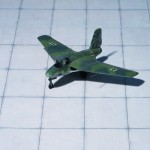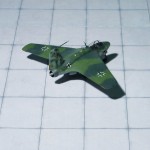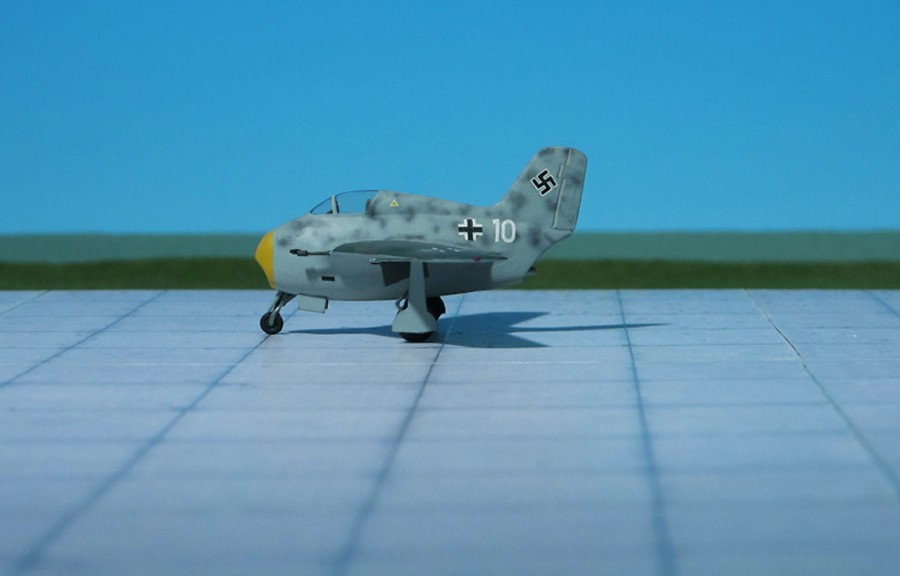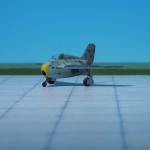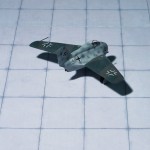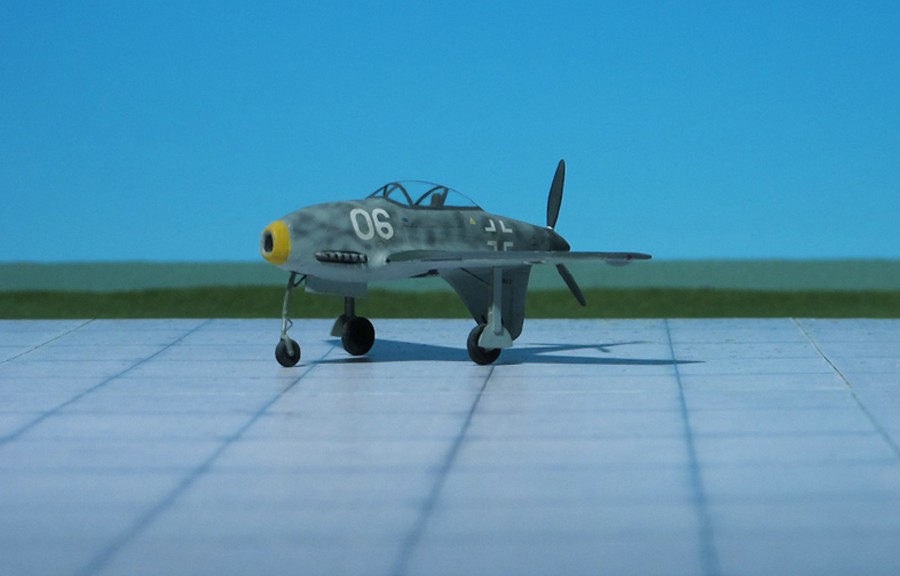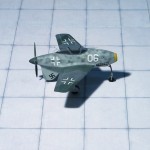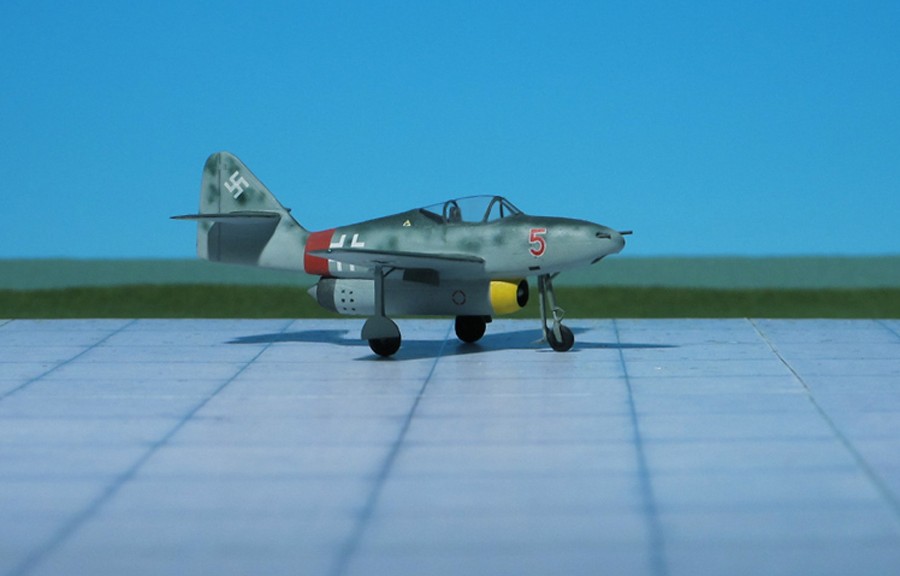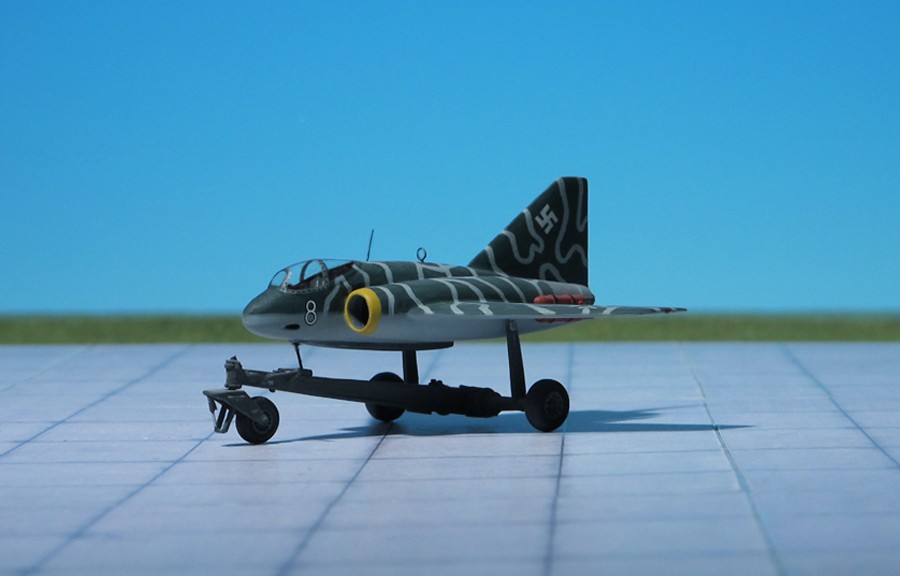TYPE: Anti-ship and –fortification destroyer. Project
ACCOMMODATION: Pilot only in Me 262
POWER PLANT: Two Heinkel-Hirth HeS 011 turbojet engines, rated at 1,500 kp each (Ju 287) and two Junkers Jumo 004 turbojet engines, rated at 950 kp each (Me 262)
PERFORMANCE: 500 mph (estimated)
COMMENT: In desperate attempts to stop the forward rushing Allied troops several proposals were offered using different pilotless aircraft as guided missile in pickapack combination with a piloted leading aircraft (‘Mistel’, ‘Mistletoe’). They should be used against ships, fortifications, and troop concentrations. The unmanned aircraft with a large hollow-charge warhead was guided to vicinity of its target by a single-seat fighter temporarily attached to a superstructure above the fuselage. When the objective was reached, the pilot of the upper component set the controls to approach the target in a shallow glide, and at the appropriate distance detached his aircraft and climbed away, the pilotless lower component continuing on its set course.
In March 1945 a proposal was submitted using a variant of the brand new Junkers Ju 287 as guided missile in combination with the Messerschmitt Me 262. This Ju 287 was somewhat smaller than the original aircraft, had the same wing and tail arrangement, and was to be powered by two or four turbojet engines of various types. For take-off a special trolley was developed by Rheinmetall-Borsig. There is no evidence whether this project ever was seriously discussed with the authorities (Ref.: 16).
